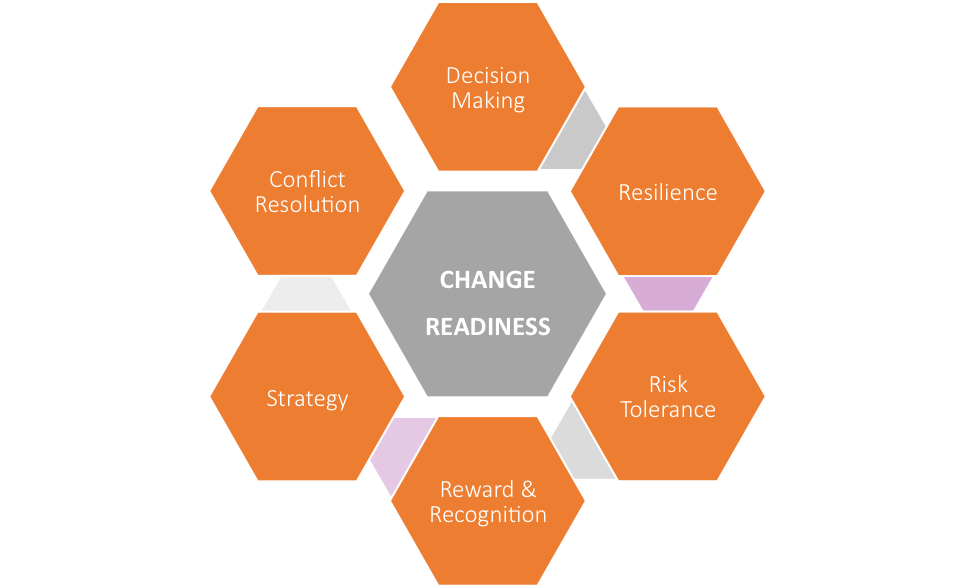 If you love Italian food as much I do, then you know you’ll need to get ready to enjoy that steaming plate of pasta or suffer it sudden appearance on your clothing! Careful as you are, that heavenly sauce will appear on your tie, your blouse, your jacket. (Did you ever notice that spaghetti is not usually included on the menus for weddings? We all know why!)
If you love Italian food as much I do, then you know you’ll need to get ready to enjoy that steaming plate of pasta or suffer it sudden appearance on your clothing! Careful as you are, that heavenly sauce will appear on your tie, your blouse, your jacket. (Did you ever notice that spaghetti is not usually included on the menus for weddings? We all know why!)
Change is similar … it’s messy, necessary, can be enjoyable/profitable but you need to prepare or fall prey to the splatter. Usually we see companies declare a change program, outline objectives and then the “meal is served”. What usually happens is that we haven’t prepared and end up with the spaghetti on our laps! Grab your bib, your napkins and forget about wearing a white shirt or blouse. Change can be a wonderful experience – planned accordingly.
The marginal success of change efforts has been well-documented. Research and case studies documented that change is implemented successfully in one-half of all transformation initiatives. John Kotter is less optimistic in reporting that he sees change efforts failing 70% of the time. When asked, leading “change experts” attribute failure to:
- Too many competing priorities leading to fatigue
- Prior attempts having failed (poor track record)
- Employees skepticism at all levels
- Communication issues stemming from limited leadership alignment.
It does not appear that the transformation strategy, direction or intended outcomes are the cause of failure. What appears to be the underlying issue when success is illusive is the organization simply does not know how to work, work through issues (like disagreeing or challenging authority), or move forward productively. (They haven’t remembered to hand out the napkins and bibs!)
The Transformational Readiness Model (TRM) includes six elements which, not only contribute to change success, but also improve productivity, reduce cycle time and enhance employee engagement.

The fundamental TRM elements include:
Resilience – What is “the state of the state” within the organization? What is the bounce back-ability of the teams impacted? Can the impacted teams muster the energy to take on new, and different battles? How much is turmoil driving change? What is the source of the turmoil? Are employees sufficiently engaged to learn, support and undertake the necessary heavy lifting of moving from the current reality to the new reality?
Risk Tolerance – This is a very sensitive environmental factor to consider. Leadership needs to fully assume responsibility for what is at stake for the employees, the brand, and key stakeholders. A responsibility of leadership is to assess just how far, how fast and WIIFM (what’s in it for me) the group can be driven? Additionally, regulatory mandates must be considered. Public opinion on what matters is another essential consideration. Leadership must be able to answer the question: how much can we risk and what happens if we fail?
Reward & Recognition – A traditional role for HR in change programs is to look at cost and headcount reductions, push metrics to seek greater productivity and assess who goes and who stays. Much has been written about employee motivation, especially rewards. TRM embraces the philosophy to “recognize and reward before the sweat of the brow is dry”. Yes, ongoing recognition of progress needs to be built into the process of change. Change is hard work and should be rewarded incrementally. As a cautionary note, rewards need to be carefully woven into total compensation strategy in order to maintain the integrity of the overarching pay structure.
Strategic Direction – Strategy is owned by the C-suite or its designees. Not only are they responsible for designing and defining the vision, they also own communicating the rationale. Leaders must be convincing outside of the boardroom. Leaders must demonstrate that the strategy’s rationale is well founded, meaningful and appropriate. Designing strategy is relatively easy when compared to securing commitment throughout the organization. Leadership’s public role starts in earnest when the change is announced and that’s when the tough sledding begins.
Conflict Resolution – Culture guardrails on how to address conflicts are essential to effective and productive interaction. People of good hearts and minds can and should disagree. Then clear and well defined rules must be in place to guide effective discourse. HR can help ensure that the rules of the road are clear to all and should identify potential sources of conflict in advance. Conflict can arise between two individuals, within a department or team, or at the organizational level. Rules of the road are critical so all participants know how to disagree – with a positive outcome and minimal casualties.
Decision Making – Employee engagement surveys consistently rank management decision making as a low rated function. Decisions come in many sizes – a process for decision making should incorporate scope, scale and situation. Roles and responsibilities need to be defined and reinforced: Who decides what? Who gets to participate in the dialogue? When do the impacted parties receive information? Governance of decision making can and usually results in highlighting inconsistencies, identifying those who hold too much authority, and spotlighting situations where anarchy reigns.
Hungry? Want to avoid ruining your favorite shirt (perhaps your career???) because of spills and splatters? If transformation is an issue for your organization, Parrish Partners is ready to provide a savory meal – without the mess! Let us bring our napkins for your delicious meal to help you handle the inevitable mess without the splatter.
© Copyright Jeanette K Winters, 2015
